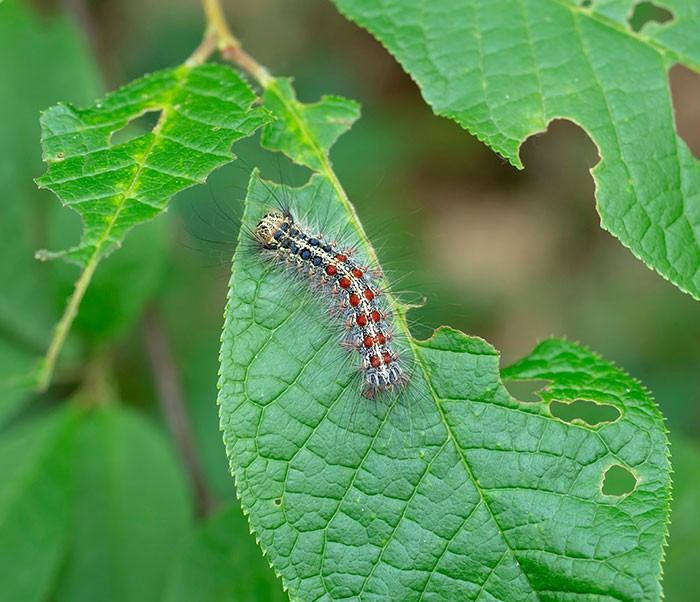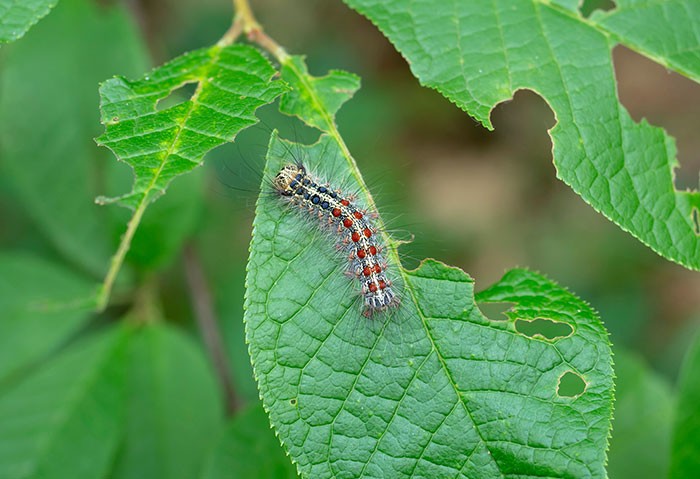European (Gypsy) Moth Prevention For Commercial Properties


With the anticipation of spring just around the corner, Canadian businesses and property managers are meticulously preparing for the warmer months ahead.
From spring cleaning and property maintenance to noxious weed and pest control, it’s essential that commercial property managers take a proactive approach to the safety and integrity of their outdoor environments.
Over the past 5 decades, the European (gypsy) moth species (also referred to as Lymantria dispar dispar) has become a growing concern across Ontario and Eastern Canadian areas.
While native to Europe, these invasive moths have quickly surged in population causing severe defoliation and irreversible damage to the forests, biodiversity and economy within Canada.
At Clintar Commercial Outdoor Services, our specialists are well-equipped with eco-friendly solutions to best support your commercial property while safeguarding our natural environments.
What Are The Risks of a European (Gypsy) Moth Infestation?
Unfortunately, European (gypsy) moths are most harmful to their environments during their larvae stage, creating a very short timeframe for preventative measures to take place.
Once the egg masses have attached themselves to the bark of a tree in the late winter to early spring, they will then go through the process of becoming larvae (or European (gypsy) moth caterpillars) causing a number of damaging effects:
Environmental Risks:
With a preference for oak trees, there is a growing concern that the long-term effects of European moth infestations will severely impact oak tree regeneration across eastern North America.
As leaves play an important role in the food production of trees, the risk of widespread defoliation creates irreversible damage to the tree’s ability to grow new leaves and recover.
Eating up to one square foot of tree leaves per day, European (gypsy) moths are also known to destroy maple trees, spruce, elm, apple, willow trees and even lawns and smaller plant life within a very short amount of time.
Ecological Risks:
In addition to environmental concerns, it is important to understand how these infestations might disrupt local ecosystems as well.
As trees often function as both shelter and food for many types of wildlife, the risks of defoliation create enormous concerns for the survival of impacted species.
With the ability to destroy entire ecosystems, it’s essential that commercial property managers uphold their commitment to safe and sustainable environments through responsible property maintenance throughout the year.
Safety Risks:
With distinct characteristics, European (gypsy) moth caterpillars are easy to identify by their dark, hairy bodies along with red and blue spots along their backs.
Unfortunately, these tiny caterpillar hairs can often get caught in skin, clothing or outdoor materials causing bumps, stinging and painful red patches upon contact.
In the event of a European moth rash, it is very important to carefully remove each hair from the skin to minimize the allergic reaction.
Economic Risks:
With outbreaks of European (gypsy) moth infestations every 7 to 10 years, Ontario continues to be at high risk of significant pest damage this summer, making the need for responsible property maintenance very important.
Like many invasive species, European moth caterpillars have a strong ability to transport themselves to new feeding areas as needed, putting our communities at risk of severe defoliation.
As this can also have a huge impact on Canadian resources and landscaping expenses, it is essential that commercial property managers safeguard their landscaping investments (as well as their communities) with preventative maintenance protocols.
Commercial Reputation Risks:
From an aesthetic perspective, defoliated trees can have a negative impact on the professional appearance of your commercial business.
From thinned-out canopies and dying shrubs to visible infestations and allergic skin reactions, it is essential that commercial property managers arrange for reliable spring maintenance services to ensure the quality, safety and integrity of their outdoor environments.
By taking a proactive approach to invasive species control, property managers can play a large role in reducing the spread of infestation while simultaneously protecting the look of their outdoor spaces.
What Are The Signs of a European (Gypsy) Moth Infestation?
With the ability to defoliate millions of trees each year, it is important that Canadians understand the key warning signs to prevent the risk of further environmental damage.
To determine if your commercial property is infested by European (gypsy) moths, here are a few important signs to look out for:
- Teardrop-Shaped Egg Masses (Early Spring): loonie-sized egg masses covered in tan-to-buff coloured hairs, often found on tree trunks, bark, outdoor furniture, under leaves, the sides of buildings or anywhere providing shade from direct sunlight.
- European (Gypsy) Moth Larvae/Caterpillars (Late Spring): eggs hatch into caterpillars when tree buds begin to open, growing up to 2 ¾ inches for up to 7 weeks. Identified by their hairy, dark-coloured bodies with blue bumps towards the front and red bumps towards the back. Often congregate in shaded areas during the day.
- European (Gypsy) Moths (Mid Summer): visible from early to late August. Male moths are brown with antennae and the ability to fly, females are cream-coloured and cannot fly. It is essential to deal with European moths early in their life cycles as once they are fully grown, they stop eating plant life and focus on reproduction.
- Widespread Leaf Damage/Defoliation: small to large holes in the surface of tree leaves or shrubs. Often found during the month of May.
- Stripped Branches: as older larvae can devour tree leaves entirely, defoliation will often result in stripped branches leaving the affected trees vulnerable to disease or secondary infestation.
- Dying Shrubs/Trees: once a tree and/or shrub has been completely defoliated, they are too weak to regenerate back to health, often requiring removal or replacement. Larvae then migrate in groups to locate new sources of food.
While it is important to catch the warning signs as early as possible, we highly recommend assessing for possible moth infestations during the early months of spring.
As the egg masses are small and often difficult to locate, it is important to work with an experienced commercial landscaping professional to ensure that your property is safe, reliable and protected all year around.
EUROPEAN (GYPSY) MOTH TREATMENT & PREVENTION SERVICES
While some trees can be treated for pests and invasive species all throughout the year, the risk of European (gypsy) moth infestations offer only a short time frame for effective treatment and protection. By carefully removing egg masses and nests during the early spring season, a clean, tidy environment will prevent the risk of moth larvae from devouring surrounding environments and continuing to spread.
At Clintar Commercial Outdoor Services, we pride ourselves on our environmentally-friendly, ecosystem-based strategies such as Integrated Pest Management (IPM).
With Forest Class licensing by the Ministry of the Environment, our techniques (such as biological control, habitat manipulation and commercial property maintenance) allow us to play our part in the safety and well-being of our clients, communities and environment.
Affiliated with a number of specialized service providers across the country, we are well-prepared to tap our wide-range of resources, techniques and service professionals to confidently get the job done.
To learn more about protecting the trees on your property, inquire with your local Clintar franchise about treatment, prevention and IPM techniques that would be safe for your staff, clients and commercial landscape.











